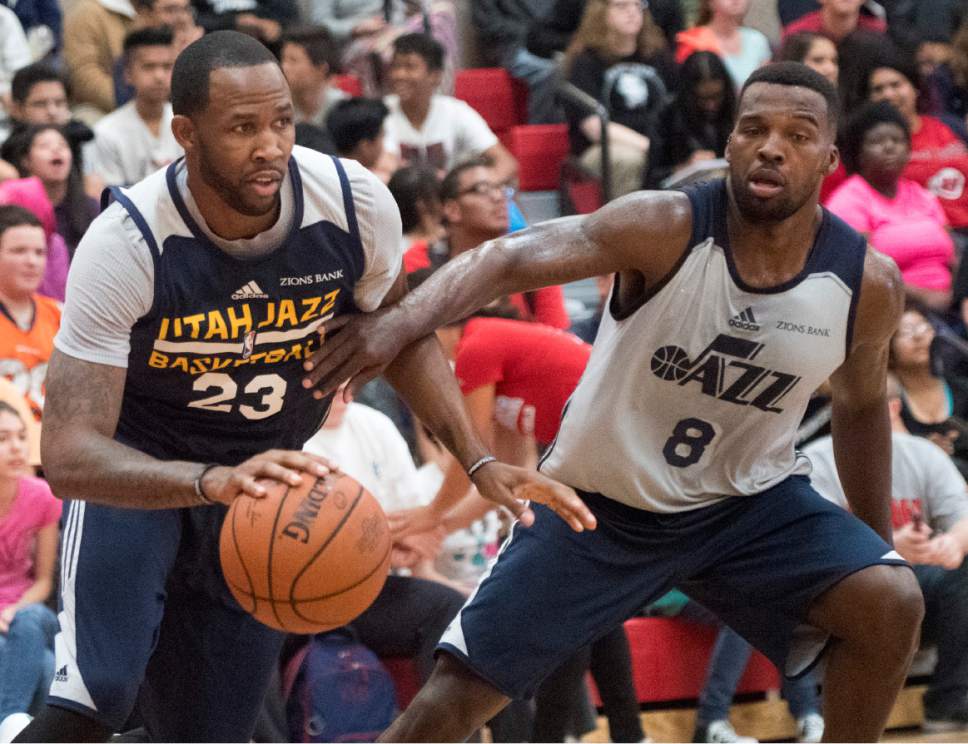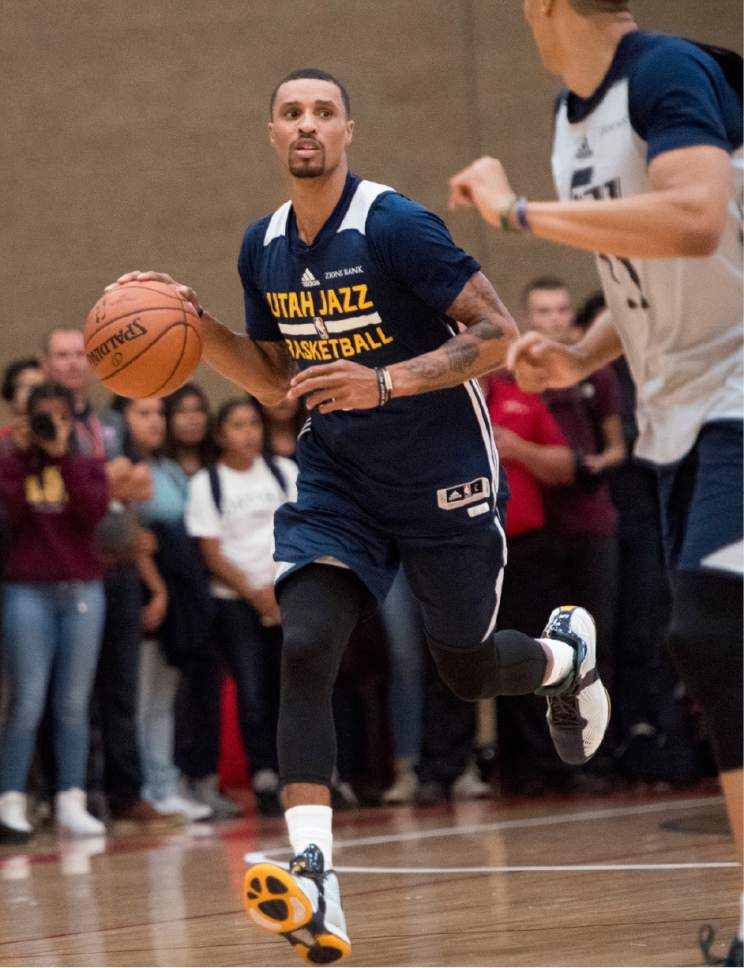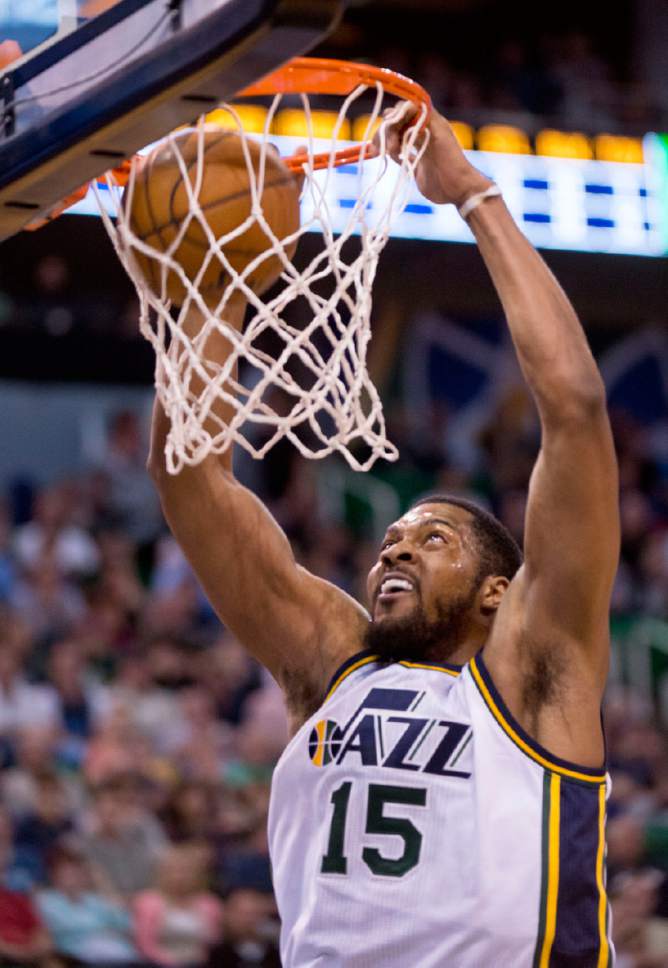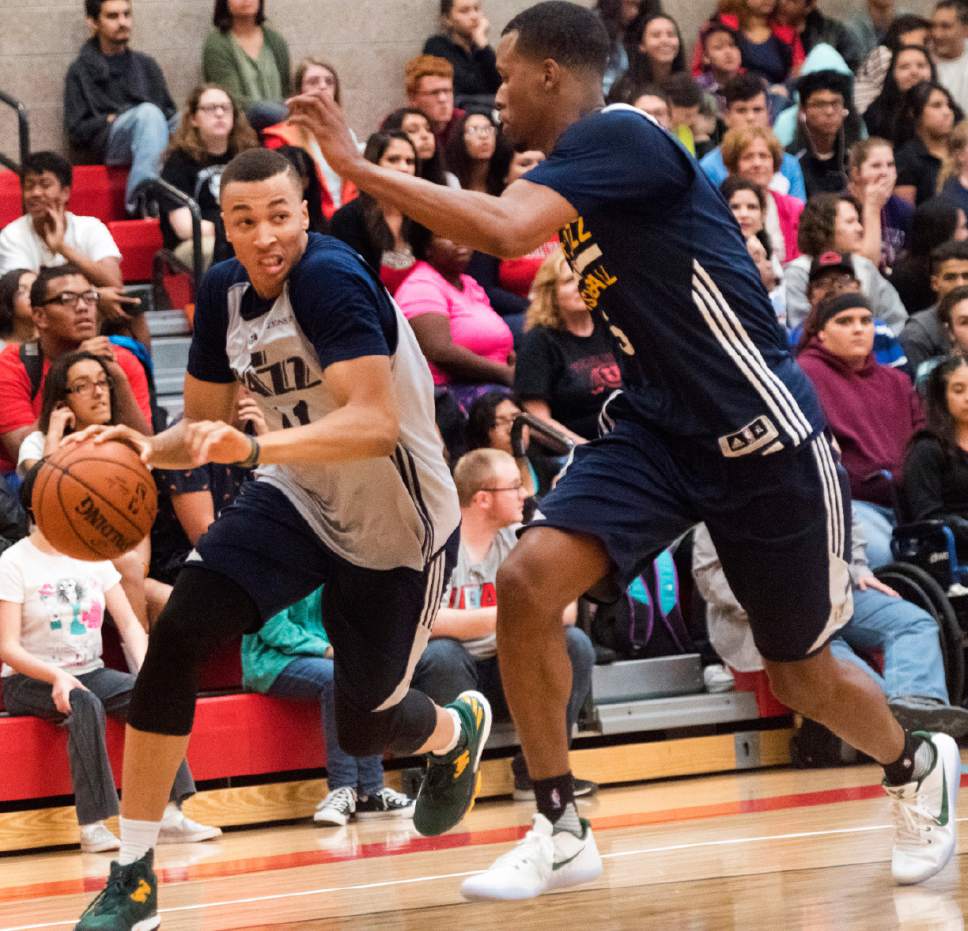This is an archived article that was published on sltrib.com in 2016, and information in the article may be outdated. It is provided only for personal research purposes and may not be reprinted.
The Jazz's substantial depth this season may be the team's biggest strength. It's likely coach Quin Snyder will no longer have to sweat the injuries, nicks and bruises that can occur over an 82-game regular season. His options seem almost limitless on paper, which means a team that struggled many times off the bench last year may now sport one of the best second units in the NBA.
The added depth — bolstered by the acquisitions of veterans George Hill, Boris Diaw and Joe Johnson — has potential. It may also be the biggest internal challenge the Jazz face this season.
One can make the argument that there might be too much depth. While the Jazz's lineup options are plentiful, the minutes won't be. And neither will the shots.
The season is a long one, Snyder points out. But while there is a long list of deep teams that have succeeded — the 2000 Portland Trail Blazers, the 2004 Detroit Pistons and the 2015 Atlanta Hawks to name three — there are also multiple examples of teams — this of last year's Houston Rockets — with similar depth that have imploded.
As such, internal chemistry could determine the fate of this Jazz team as much as anything that might happen on the floor.
"We all have to see past that and be on the same page," Diaw said. "We have to understand, no matter what, that the end game is to win. Of course, sometimes guys have their own agendas and contracts to worry about. But at the end, the most important thing is to win games."
Utah's depth is unique. To put it into context, the Jazz' projected fourth point guard — Raul Neto — spent much of last season in the starting lineup. Joe Ingles projects as the fifth wing — fifth wings don't typically play many minutes, yet he's been a rotation regular for the past two years.
Jeff Withey , who will probably be either the 14th or 15h man on the roster, saw a lot of playing time last year. Johnson, a seven time all-star, has started every game he's played since the 2004-2005 season, but probably won't be a starter on this team.
In sum, 14 Jazz players — either here or elsewhere — saw major rotation minutes the last time they stepped on an NBA floor. Regular NBA rotations typically run nine deep — sometimes, a coach can manufacture consistent minutes for 10. If one does the math, it could be a challenge for Snyder to keep everyone happy.
"To some degree, there's been too much of a fixation on minutes," Snyder said. "It's relevant, but developing the roster is going to take time. I don't think we're going to have a goal of going into Christmas knowing who our starting quarterback is going to be, if you know what I mean. There will be adjustments over the course of the season, there will be different matchups."
Having said that, Snyder acknowledges that sometimes players are going to have to be "happy for the group." He also knows that developing internal chemistry while determining his rotation — even if he tinkers like a mad scientist for a few months — will be one of the biggest challenges.
Over the course of training camp this past week, Snyder has done some subtle things geared at catering to his new roster. He's having his team play at a faster pace than last year. He's mixing and matching lineups during scrimmage sessions, and continues to stress winning as the most important thing for the upcoming season.
"We added so much depth, that getting guys involved and becoming compatible is going to be very important to us," Jazz forward Trey Lyles said.
There are lots of reasons for everybody to pitch in and make it work, but one stands above the rest: this is a team that hasn't tasted postseason success since 2012. For veterans such Derrick Favors and Gordon Hayward, it's the only thing that really matters.
"I want to get to the playoffs," Favors said. "That's my only goal for the year."
There is internal playing experience when it comes to deep teams. Johnson played a season with Steve Nash and Amare Stoudemire in Phoenix on a team where there were plenty of shooters and only one basketball.
But Johnson said Nash was such a leader, and such a good distributer on the floor that he counts it as the one team he's played on that had terrific chemistry.
"It wasn't the things we did on the court," Johnson said. "It was what we did off the court. Steve was the head of it. We all hung out in the same places, we did the same things. Really getting to know the guy next to you, that's really important."
And then you have Lyles, who played on a University of Kentucky team so stacked that he was forced to play out of position at small forward in order to see the floor. The frontcourt he played on featured three lottery picks, including himself. Devin Booker — who was sensational in his rookie season with the Phoenix Suns — wasn't even a starter on that team.
Yet, that Kentucky group featured very little ego. Its coach — John Calipari — convinced most on that team they would be first round picks. They bonded through that common goal, and became one of the better college basketball teams ever.
At the end of the day, that situation isn't dissimilar to what the Jazz have. There's plenty of talent. There could be a minutes crunch at times. But the goal of making the playoffs is so prevalent within the roster that it could override many would-be issues.
"At Kentucky we didn't have a problem with playing time, because we all knew eventually everyone would get their chance," Lyles said. "We had two guys at every position, almost like two platoons. The same kind of thing can go on here."
twitter: @tribjazz —
Projected Jazz depth chart
First unit
George Hill
Rodney Hood
Gordon Hayward
Derrick Favors
Rudy Gobert
Second unit
Dante Exum
Alec Burks
Joe Johnson
Trey Lyles
Boris Diaw
Fighting for minutes
Shelvin Mack
Raul Neto
Joe Ingles
Joel Bolomboy
Jeff Withey









